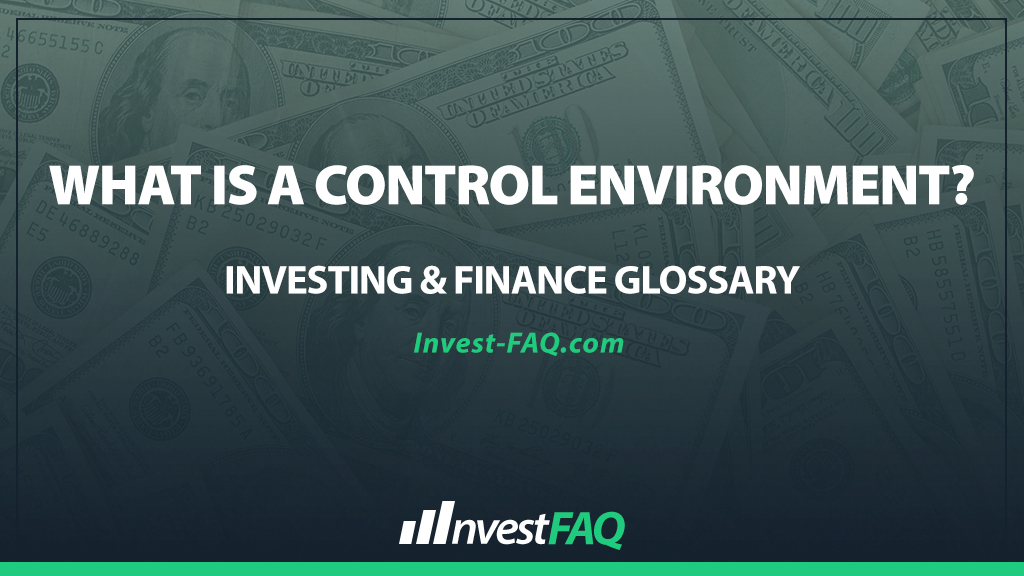
Control Environment
Contents
A control environment is the foundation of an organization’s overall system of internal control, comprising the policies, procedures, and attitudes that collectively influence how control is exercised and monitored. It sets the tone at the top, affecting the integrity, ethics, and behavior of an organization’s people.
In business, the control environment is critical as it establishes the groundwork for how risk management, governance, and internal control processes are perceived and implemented by employees at all levels.
A strong control environment supports the achievement of an organization’s objectives, enhances operational efficiency, and ensures compliance with laws and regulations.
Example of a Control Environment
Consider “ABC Manufacturing,” a company that has established a robust control environment to ensure the accuracy and reliability of its financial reporting. As part of its control environment, ABC Manufacturing has implemented the following measures:
Leadership: The CEO and senior management openly commit to integrity and ethical values.
Employee Competence: Policies are in place to hire, train, and retain competent accounting staff.
Authority and Responsibility: Clear lines of authority and responsibility are established for financial reporting.
Accountability: Performance measures and rewards are aligned with the company’s objectives, promoting accountability.
Audit Committee: An independent audit committee oversees the financial reporting process, including the selection and oversight of external auditors.
In ABC Manufacturing’s scenario, the control environment forms the backbone of its internal control system, influencing the overall behavior towards financial reporting and control activities. The CEO’s commitment to integrity sets a positive tone at the top, guiding the ethical conduct of all employees.
By ensuring that staff involved in financial processes are competent and understand their roles, the company minimizes errors and improves the reliability of financial statements.
The establishment of an audit committee provides an additional layer of oversight, ensuring that internal controls are effective and that financial reporting is transparent and compliant with relevant standards.
Types and Uses in Business Scenarios
Control environments can vary in complexity and structure but are essential across various business scenarios, including:
Financial Reporting: To ensure the accuracy and reliability of financial statements.
Compliance: To adhere to laws, regulations, and internal policies.
Operational Efficiency: To improve processes and reduce waste.
Fraud Prevention: To deter and detect fraudulent activities.
Risk Management: To identify and mitigate risks that could impede the achievement of objectives.
Significance for Investing & Finance
The control environment is of paramount importance in accounting for several reasons:
Foundation of Internal Controls: It is the cornerstone upon which reliable and effective internal controls are built, influencing the overall attitude towards governance and risk management.
Ensures Compliance and Accuracy: A strong control environment helps ensure that financial reporting is accurate and compliant with accounting standards and regulations, thereby reducing the risk of financial misstatements.
Enhances Reliability: It contributes to the reliability of financial information, which is crucial for decision-making by management, investors, and other stakeholders.
Deters Fraud: By promoting ethical behavior and accountability, a strong control environment can help deter fraud and other unethical practices.
In summary, the control environment is a critical component of an organization’s internal control system, setting the tone for governance, risk management, and control activities. It underpins the organization’s efforts to achieve its objectives, ensure accurate and reliable financial reporting, comply with laws and regulations, and enhance overall operational efficiency.
FAQ
What defines a strong control environment in an organization?
A strong control environment is characterized by ethical leadership, clear communication of values and expectations, and established policies and procedures that promote accountability and integrity across all levels of the organization.
How does the control environment impact financial reporting?
The control environment directly impacts financial reporting by establishing a culture that prioritizes accuracy, compliance, and reliability, thereby ensuring the integrity of financial statements and reducing the risk of errors and fraud.
Can a control environment affect a company’s risk management practices?
Yes, a control environment affects a company’s risk management practices by setting the tone and foundation for identifying, assessing, and responding to risks, thus enhancing the organization’s ability to achieve its objectives.
What role does leadership play in shaping the control environment?
Leadership plays a crucial role in shaping the control environment by exemplifying ethical behavior, setting clear expectations for conduct, and establishing policies and controls that support the organization’s objectives and compliance requirements.
